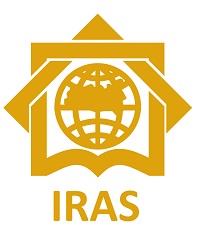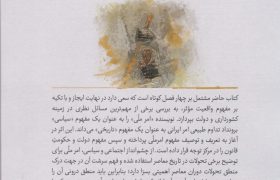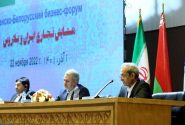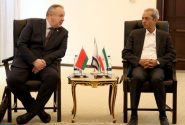By: Arash M. Akbari
Introduction
The decision by France, Germany, and the United Kingdom (the E3) to trigger the snapback mechanism against Iran under United Nations Security Council Resolution (UNSCR) 2231 represents a critical juncture in international diplomatic relations and nuclear non-proliferation efforts. This move, initiated on August 28, 2025, begins a 30-day process that could potentially reinstates all United Nations sanctions against Iran that had been lifted under the 2015 Joint Comprehensive Plan of Action (JCPOA). While the E3 justifies this action as a necessary response to Iran’s nuclear advancements, the legal legitimacy and political wisdom of this decision require rigorous examination under international law norms and principles of diplomatic engagement. The context surrounding this decision is further complicated by recent aggressive actions against Iran, including documented Israeli attacks on civilian infrastructure that may constitute war crimes under international humanitarian law. This essay examines the European snapback decision through the lenses of international law, diplomatic practice, and moral consistency, arguing that the mechanism’s invocation lacks legal solidity, overlooks Western contributions to the JCPOA’s deterioration, and ignores escalating regional violence against Iranian targets—all while potentially strengthening hardline elements within Iran and undermining the global non-proliferation regime.
Historical Context of the JCPOA and UNSCR 2231
The Joint Comprehensive Plan of Action (JCPOA), endorsed unanimously by the UN Security Council through Resolution 2231 in July 2015, represented a diplomatic triumph after years of negotiations between Iran and the P5+1 (China, France, Germany, Russia, the United Kingdom, and the United States, with the European Union serving as coordinator). The agreement established a detailed framework for limiting Iran’s nuclear program to exclusively peaceful purposes in exchange for comprehensive sanctions relief. UNSCR 2231 incorporated the JCPOA into international law and established a specific timeline for the termination of previous Security Council sanctions resolutions concerning Iran’s nuclear program.
The resolution outlined a precise implementation timetable beginning with Adoption Day (October 18, 2015), followed by Implementation Day (January 16, 2016) when the IAEA verified Iran’s compliance with initial nuclear-related commitments, leading to the termination of previous sanctions resolutions. Transition Day would occur after eight years or upon an IAEA report concluding that all nuclear material in Iran remained peaceful, with Termination Day scheduled for ten years after Adoption Day, when all provisions of Resolution 2231 would conclude. This carefully constructed framework reflected a balanced approach to addressing international concerns about Iran’s nuclear program while recognizing Iran’s right to peaceful nuclear technology under the Nuclear Non-Proliferation Treaty (NPT).
The architecture of UNSCR 2231 included the snapback mechanism as an emergency safeguard rather than a primary enforcement tool. According to paragraph 11 of the resolution, if any JCPOA participant state believed Iran was in “significant non-performance” of its commitments, that state could notify the Security Council, triggering a 30-day process whereby unless the Council passed a new resolution continuing sanctions relief, all previous sanctions would automatically reinstate. This mechanism was designed to be automatic and veto-proof to ensure that any violation would be met with consequences, addressing concerns about Iranian compliance. However, the mechanism presumed good faith participation by all parties and did not anticipate a scenario where one participant would unilaterally withdraw from the agreement while others continued participation.
Table: Key Provisions of UNSCR 2231
| Provision | Purpose | Timeline |
| Adoption Day | JCPOA comes into effect | 18 October 2015 |
| Implementation Day | Termination of previous sanctions resolutions | 16 January 2016 |
| Transition Day | Additional restrictions lifted | 8 years from Adoption Day or IAEA “Broader Conclusion” |
| Termination Day | All Resolution 2231 provisions terminate | 10 years from Adoption Day |
| Snapback Mechanism | Reinstatement of sanctions if significant non-performance | 30-day process upon notification |
The unilateral withdrawal of the United States from the JCPOA in May 2018 under the Trump administration fundamentally altered the agreement’s equilibrium. The US reimposed comprehensive sanctions against Iran and initiated a “maximum pressure” campaign that severely constrained Iran’s ability to receive the economic benefits promised under the agreement 4. Despite this breach by the US, Iran continued to comply with its nuclear restrictions for over a year before gradually initiating a controlled reduction of its commitments beginning in May 2019. This sequence of events is crucial to understanding the current crisis—Iran’s nuclear advancements followed rather than precipitated the US withdrawal and European inability to provide meaningful sanctions relief.
Legal Analysis of the Snapback Mechanism
The E3’s decision to trigger the snapback mechanism raises profound legal questions under international law and the specific provisions of UNSCR 2231. First, the resolution specifies that “any JCPOA participant state” may trigger the mechanism by notifying the Security Council of an issue believed to constitute “significant non-performance” of commitments under the JCPOA. However, the resolution does not explicitly address whether states that have effectively withdrawn from or repudiated the agreement (as the US did in 2018) retain standing as “participant states.” Russia and China have challenged the E3’s legal authority to initiate snapback, particularly given the European failure to uphold their own JCPOA commitments regarding sanctions relief.
The concept of good faith implementation (pacta sunt servanda) is a cornerstone of international treaty law under the Vienna Convention on the Law of Treaties. Iran persuasively argues that the European parties have failed to uphold their JCPOA obligations, particularly after the US withdrawal, by not providing meaningful economic relief from US secondary sanctions. The European mechanism INSTEX (Instrument in Support of Trade Exchanges), designed to facilitate humanitarian trade with Iran, proved largely symbolic and failed to offset the devastating economic impact of US sanctions. This European failure to implement their JCPOA commitments potentially undermines their moral and legal standing to accuse Iran of “significant non-performance.”
Moreover, the snapback mechanism was designed as a last resort within the context of a functioning agreement, not as a tool to be weaponized by parties who have themselves arguably violated the spirit of the agreement. Russia’s Foreign Ministry stated that the E3’s actions were “illegitimate” and placed “the entire responsibility for the situation with the JCPOA on Iran, without taking into account the real causes of the current situation,” specifically referencing the US withdrawal and European inability to preserve the agreement’s economic benefits. China similarly characterized the European move as “not constructive” and warned it would “undermine the process of a political and diplomatic settlement”.
From a procedural perspective, the snapback mechanism’s automatic nature bypasses normal Security Council procedures, including the veto power of permanent members. While this design was intended to ensure consequences for Iranian violations, it also creates potential for abuse by allowing a single party to trigger a process that could collapse the entire agreement. Iran’s Foreign Minister Abbas Araghchi correctly noted that the snapback invocation lacks “any legal basis” given that Iran’s reduced compliance came only after other parties failed to uphold their commitments. The International Court of Justice has consistently emphasized in its jurisprudence that principles of proportionality and reciprocity govern the implementation of treaty obligations, suggesting that responses to alleged violations must be proportionate and consider the context of prior breaches by other parties.
The timing of the E3’s decision also raises questions of political motivation rather than legal necessity. The snapback notification comes just weeks before the mechanism is set to expire on October 18, 2025, suggesting a desire to utilize leverage before its expiration rather than a genuine attempt to address compliance issues. This rushed approach undermines the careful diplomatic process envisioned by UNSCR 2231 and suggests the prioritization of political posturing over constructive conflict resolution.
Humanitarian Dimensions and Israeli Actions
Any comprehensive analysis of the snapback decision must consider the broader regional context, including documented Israeli military actions against Iranian territory that may constitute war crimes under international law. On June 23, 2025, Israeli forces conducted airstrikes on Tehran’s Evin prison complex, killing at least 80 people, including prisoners, visitors, and staff members. Human Rights Watch conducted a detailed investigation concluding that the attack was “unlawfully indiscriminate” and an “apparent war crime” because no evident military targets were present in the facility.
Evin prison held approximately 1,500 prisoners at the time of attack, including many political dissidents and activists imprisoned by the Iranian government for peaceful activities. The strikes occurred during visiting hours, damaging the visitation hall, medical clinic, kitchen, and multiple prison wards. According to HRW’s investigation, “The laws of war applicable to the international armed conflict between Israel and Iran prohibit attacks that target civilians and civilian objects, that do not discriminate between civilians and combatants, or that are expected to cause harm to civilians or civilian objects disproportionate to any anticipated military advantage”. Israel’s justification—that the facility was used for “intelligence operations against the state of Israel”—appears unsupported by evidence and fails to meet the proportionality requirement under international humanitarian law.
The attack on Evin prison formed part of a broader 12-day conflict between Israel and Iran in June 2025 that resulted in significant civilian casualties. According to Human Rights Activists in Iran (HRAI), Israeli strikes killed approximately 1,190 people and injured 4,475, with about 700 civilians among the dead. These actions represent serious violations of the Geneva Conventions and the principles of distinction and proportionality that form the bedrock of international humanitarian law. Notably, the international response to these potential war crimes has been markedly muted compared to the vigorous action on the snapback mechanism, revealing a concerning double standard in the enforcement of international law.
Iranian authorities also committed human rights violations in the aftermath of the attack, including subjecting survivors to abusive treatment, enforced disappearances, and inhumane detention conditions during transfers to other facilities. However, these violations do not justify the initial Israeli attack on a civilian facility. The principle of distinction in international humanitarian law requires warring parties to always distinguish between military objectives and civilian objects, with attacks directed only against military objectives.
The European decision to trigger snapback without addressing these serious violations of international law by Israel creates a perception of selective enforcement of international norms. This approach undermines the credibility of Western powers as honest brokers in the region and reinforces narratives about the unequal application of international law. If international security mechanisms are deployed only against certain states while others enjoy impunity for clear violations, the entire framework of international law risks erosion and loss of legitimacy.
Table: Documented Impacts of Israeli Strike on Evin Prison (June 23, 2025)
| Impact Category | Details | |
| Fatalities | 80 killed (prisoners, staff, visitors, nearby residents) | |
| Infrastructure Damage | Visitation hall, medical clinic, kitchen, administrative buildings destroyed | |
| Notable Victims | Social workers, conscripts, artist Mehrangiz Imanpour, philanthropist Hasti Mohammadi | |
| Human Rights Violations | Enforced disappearances, abusive transfers, inhumane detention conditions after attack | |
| Legal Characterization | “Apparent war crime” – Human Rights Watch; violation of international humanitarian law – UN |
Geopolitical Implications and Future Prospects
The E3’s decision to trigger the snapback mechanism occurs within a complex geopolitical landscape characterized by escalating tensions between Iran and Israel, upcoming US elections, and deepening divisions within the international community. Analysis of these dynamics suggests that the snapback move may exacerbate rather than mitigate regional tensions while potentially undermining the very non-proliferation goals it purports to advance.
Iran has responded to the snapback threat with predictable defiance rather than concession. Iranian MPs announced that parliament is planning legislation that would take Iran out of the Nuclear Non-Proliferation Treaty (NPT) entirely in response to the European move. Such a development would represent a catastrophic blow to the global non-proliferation regime and potentially encourage further nuclear proliferation throughout the Middle East. Rather than strengthening security, the snapback threat may push Iran toward more extreme responses that ultimately decrease regional security.
The European calculation appears driven by several factors: pressure from the United States, concerns about Iran’s nuclear advancements, and a desire to maintain transatlantic unity. However, this approach misjudges the likely Iranian response and overlooks alternative diplomatic pathways. The E3 reportedly offered a one-time six-month extension of the snapback deadline if Iran met conditions including restored IAEA monitoring and accounting for enriched uranium stockpiles, but Tehran rejected this proposal. A more productive approach might involve phased compliance rather than front-loaded demands, building confidence through reciprocal steps rather than unilateral concessions.
The regional context further complicates the situation. Israel appears to be preparing for potential military confrontation with Iran, with some analysts suggesting another conflict could occur before December 2025. Israeli officials have characterized the June war as “just the first phase” of conflict with Iran, suggesting a longer-term campaign to degrade Iranian capabilities. This aggressive posture aligns with Israel’s “mowing the grass” doctrine of conducting periodic military operations to degrade enemy capabilities rather than seeking political solutions. In this context, the European snapback decision may be perceived as endorsing or enabling Israeli military strategies rather than pursuing genuine diplomatic resolution.
The United States’ position under the Trump administration remains ambiguous. Secretary of State Marco Rubio endorsed the E3’s snapback move while stating that the US “remains available for direct engagement with Iran”. However, the administration has shown inconsistent commitment to diplomatic solutions while simultaneously supporting Israeli military actions. This ambiguity creates uncertainty about American strategic goals—whether the administration seeks a negotiated solution or regime change in Iran. The maximum pressure campaign has thus far failed to compel Iranian concessions while strengthening hardline elements within the Iranian political establishment.
Looking forward, several scenarios emerge regarding future tensions between Iran, the United States, and Israel. In the most optimistic scenario, the snapback threat serves as a wake-up call that brings all parties back to negotiations, resulting in a restored JCPOA with additional provisions addressing regional security concerns. A more pessimistic but plausible scenario involves a cycle of escalation: snapback sanctions further impoverish ordinary Iranians while strengthening hardliners; Iran reduces cooperation with IAEA monitors and accelerates nuclear advancement; Israel conducts additional military strikes with US support; and Iran responds with asymmetric attacks throughout the region. This dangerous trajectory could lead to catastrophic regional war with global economic consequences.
A third scenario involves strategic patience and creative diplomacy: the E3 postpones snapback while establishing a structured process for reciprocal confidence-building measures; the US provides limited sanctions relief in exchange for Iranian nuclear concessions; and regional security talks commence alongside nuclear discussions. This approach would require political courage and diplomatic creativity but offers the best prospect for sustainable conflict resolution.
Conclusion and Policy Recommendations
The European decision to trigger the snapback mechanism against Iran represents a problematic approach to nuclear diplomacy that raises serious questions under international law while potentially exacerbating regional tensions. Rather than strengthening non-proliferation efforts, this move may accelerate the JCPOA’s collapse and push Iran toward more extreme responses, including possible withdrawal from the Nuclear Non-Proliferation Treaty. The selective application of international pressure—vigorously pursuing sanctions against Iran while ignoring documented Israeli actions that may constitute war crimes—undermines the credibility of Western powers and reinforces perceptions of double standards in the international system.
A more constructive approach would prioritize diplomatic engagement over coercive measures, recognizing that the current crisis stems largely from the US withdrawal from the JCPOA and subsequent failure of European parties to provide meaningful economic relief. The international community should pursue a balanced strategy that addresses legitimate non-proliferation concerns while respecting Iran’s right to peaceful nuclear technology and acknowledging the security challenges posed by regional adversaries.
Specifically, the E3 should consider the following alternative approaches:
First, instead of triggering snapback, pursue an extended negotiation window with a phased compliance framework that allows for incremental sanctions relief in exchange with verified Iranian steps back toward JCPOA compliance. This approach would acknowledge the reality that comprehensive solutions cannot be achieved overnight while building confidence through measurable progress.
Second, decouple nuclear discussions from broader regional security issues while establishing parallel tracks to address both concerns. The JCPOA framework remains valuable for addressing the nuclear file specifically, while additional formats should be developed to discuss conventional military balances, missile technologies, and regional proxy conflicts.
Third, apply consistent standards to international law violations by all parties in the region, including documented potential war crimes by Israeli forces. This consistency is essential for maintaining the credibility of international institutions and legal frameworks.
Fourth, recognize that the maximum pressure approach and Coercive Measures has failed to achieve its stated objectives while causing significant humanitarian suffering among the Iranian population. Economic sanctions should be carefully targeted to avoid harming civilian populations and should be lifted proportionally as verification demonstrates compliance.
The future of Middle Eastern security depends on balanced diplomacy that addresses the legitimate concerns of all parties while respecting the framework of international law. The alternative—escalating confrontation and selective application of international norms—risks catastrophic regional conflict and further erosion of the global non-proliferation regime. The European powers have an opportunity to lead toward diplomatic resolution rather than escalating confrontation, but seizing this opportunity will require greater independence from American and Israeli pressure and a renewed commitment to multilateral conflict resolution through dialogue rather than coercion.
References:
Primary Sources
- United Nations Security Council Resolution 2231 (2015).
- Joint Comprehensive Plan of Action (JCPOA), 14 July 2015.
- Human Rights Watch. (2025). Iran: Israeli Attack on Evin Prison an Apparent War Crime.
- International Atomic Energy Agency Reports on Iranian Nuclear Compliance (2016-2025).
Secondary Sources
- Aljazeera. (2025). “Russia, China slam European nations over Iran ‘snapback’ sanctions move.”
- Middle East Institute. (2025). “Europe’s snapback gamble on Iran.”
- Foreign Policy. (2025). “The Next Israel-Iran War Is Coming.”
- The Guardian. (2025). “Israeli airstrikes on Tehran killed inmates in ‘apparent war crime’ – report.”
- BBC News. (2025). “Evin prison: Inside Israel’s deadliest strike on Iran.”
- Wikipedia. “United Nations Security Council Resolution 2231.”
Academic References
- Casey-Maslen, Stuart. The Right to Life under International Law: An Interpretive Manual. Cambridge University Press, 2021.
- Joyner, Daniel H. Iran’s Nuclear Program and International Law: From Confrontation to Accord. Oxford University Press, 2016.
- Sauer, Tom. The Nuclear Non-Proliferation Treaty: Legal Challenges and Future Prospects. Routledge, 2022.
- Van Steenberghe, Raphaël. The Law of Self-Defence and International Security. Hart Publishing, 2023.
- Zemanek, Karl. “The Legal Foundations of the International System.” Recueil des Cours 366 (2018): 9-192.















